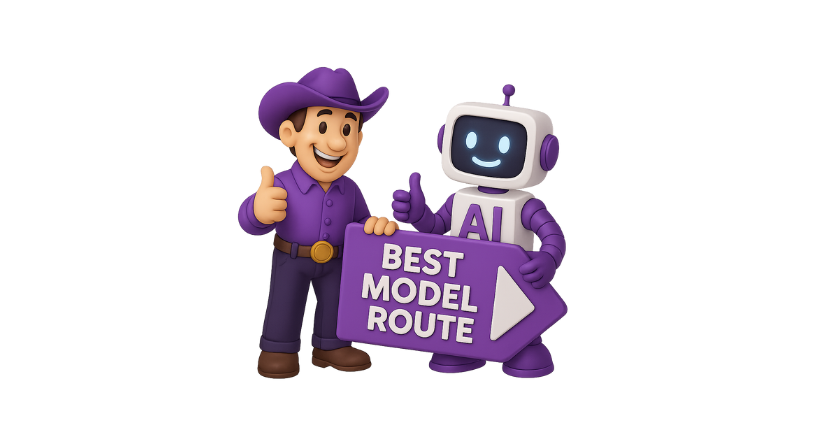Artificial intelligence is no longer just a trend, it’s a critical part of how modern businesses build, operate, and grow. Whether it’s a startup deploying OpenAI’s GPT models, or an enterprise layering Anthropic’s Claude and Google’s Gemini into its systems, AI models now power everything from chatbots to internal tools.
But there’s a growing problem that many teams are only starting to notice: AI costs are spinning out of control, and no one really knows where the money is going.
You might be tracking one provider today. But what happens when your team starts using two or three different models across departments? What if usage comes from multiple products, with no central visibility? That’s where AI model cost tracking becomes essential.
In this blog, we’ll explain why cost tracking across GPT, Claude, and Gemini matters more than ever, what challenges teams are facing, and how to monitor all your usage in one place without slowing down innovation.
Why AI Model Cost Tracking Matters
Each time someone on your team sends a prompt to an LLM like GPT-4, the provider counts tokens and charges for them. A few tokens here and there may not feel like much. But at scale, across multiple teams and tools, those tokens turn into serious spend often without warning.
In 2023 and 2024, many companies received surprise bills running into the tens or even hundreds of thousands of pounds. The reason? No central system to monitor and manage usage across models and providers.
As AI adoption grows in 2025, teams must be able to:
- See where and how AI is being used.
- Track which models are being called and at what cost.
- Break down usage by team, product, or app.
- Compare cost and performance across providers.
- Set budgets and alerts to prevent runaway spend.
This is not just a nice-to-have. It’s the foundation of any responsible AI strategy.
The Hidden Complexity of AI Usage
Let’s break down where the complexity starts.
Multiple Models, Multiple Providers
You might be using GPT-4 from OpenAI for one workflow, Claude for another, and Gemini for tasks involving Google integrations. Each provider has different pricing, limits, response times, and usage data. It’s hard to compare apples to apples.
Different Teams, One Shared Bill
When usage is spread across engineering, product, data science, and customer support but all billed to the same credit card, you lose track of who is driving what cost. That leads to internal confusion and finger-pointing when bills spike.
Lack of Real-Time Visibility
By the time you receive a monthly invoice, the damage is already done. Cost tracking must happen in real time if you want to manage usage actively, not reactively.
No Unified View
Some providers offer usage dashboards, but they only show their own data. You need to jump between platforms to piece things together, and even then, data is often inconsistent or incomplete.
What to Look for in AI Model Cost Tracking Tools
If your business is using more than one AI model or plans, here’s what your cost tracking solution must offer in 2025.
1. Unified Dashboard for All Models
You should be able to log into one platform and see a complete view of AI model usage. That includes OpenAI’s GPT, Claude from Anthropic, Gemini from Google, and any other models you use. It must show:
- Total spend by provider.
- Token usage across models.
- Latency and performance.
- Real-time usage charts.
- Alerts for spikes or overages.
2. Cross-Provider Cost Comparison
It’s not just about seeing the data, it’s about understanding where your money is going. Good tools let you compare cost per task across models. This helps you spot where you’re paying GPT-4 prices for something Claude or Gemini could handle.
3. Team-Level and App-Level Breakdown
Your tool should group usage by team, product, or project. This helps you assign cost back to the right departments and gives finance teams the clarity they need. It also encourages better behaviour from teams, since they’re responsible for their own AI usage.
4. Real-Time Budget Alerts
Monitoring after the fact is too late. You need alerts and caps that let you:
- Set monthly budgets per team or app.
- Get notified when spend crosses a set point.
- Automatically pause usage if caps are exceeded.
5. Prompt-Level Tracking
Deep visibility into prompts is key to optimisation. Your tracking software should show:
- Prompt length.
- Model chosen.
- Total tokens.
- Total cost.
- Suggestions to optimise or shorten prompts.
Quick link: AI Usage Monitoring Software
How WrangleAI Solves This for You
WrangleAI is built to handle everything listed above and more.
It’s not just another dashboard. It’s your control panel for all AI usage and spend. Whether you’re running GPT-4 prompts, using Claude for summaries, or calling Gemini inside your apps, WrangleAI shows you everything in one place.
Here’s how WrangleAI supports AI model cost tracking in 2025:
- Unified Monitoring: Track usage across OpenAI, Anthropic, Google, and custom models from one clean dashboard.
- Synthetic Groups: Organise usage by team, app, or product, and see exactly who is driving cost.
- Scoped API Keys: Assign AI keys to specific groups, and automatically track usage without manual tagging.
- Smart Routing & Optimisation: Get recommendations to switch from GPT-4 to a cheaper model when appropriate and cut unnecessary spend.
- Real-Time Alerts & Budgets: Set caps, define alerts, and avoid surprise bills.
- Prompt Insights: See which prompts are too long, too slow, or too expensive — and get suggestions to improve them.
WrangleAI makes it easy for businesses to scale AI without losing sight of cost, control, or responsibility.
If your team is using multiple AI models or plans to, WrangleAI gives you the clarity and control to do it well. Request a free demo at wrangleai.com.
Final Thoughts
AI is only getting more powerful and more expensive. The ability to monitor usage and track cost across GPT, Claude, and Gemini is no longer optional. It’s essential for any team building at scale.
By choosing the right tools now, you protect your company from runaway spend, give finance and leadership the insights they need, and let your technical teams build freely with confidence.
With WrangleAI, you don’t need to choose between innovation and control. You get both in one powerful platform.
Must read: The Ultimate Checklist for AI Cost Visibility
FAQs
What is AI model cost tracking?
AI model cost tracking is the process of monitoring how much your business is spending on AI models like GPT, Claude, and Gemini, and breaking that cost down by team, app, or prompt.
Why do companies need to track AI usage across providers?
Without unified tracking, teams face surprise bills, unclear ownership, and wasteful model use. Tracking across providers helps cut spend, boost performance, and stay compliant.
How does WrangleAI support AI model cost tracking?
WrangleAI offers real-time dashboards, scoped keys, synthetic groups, prompt analysis, and smart recommendations to track and reduce model spend across all providers.




